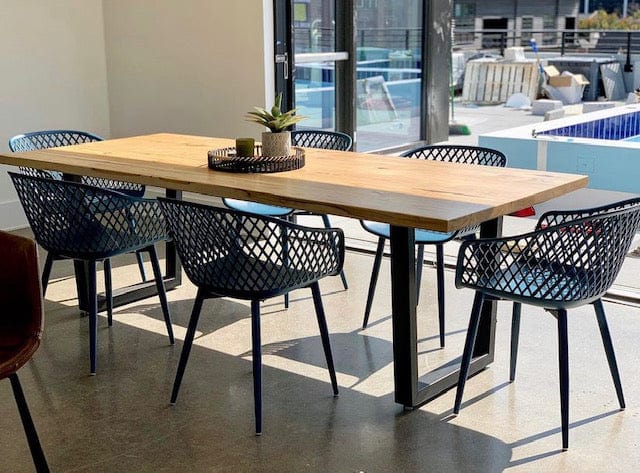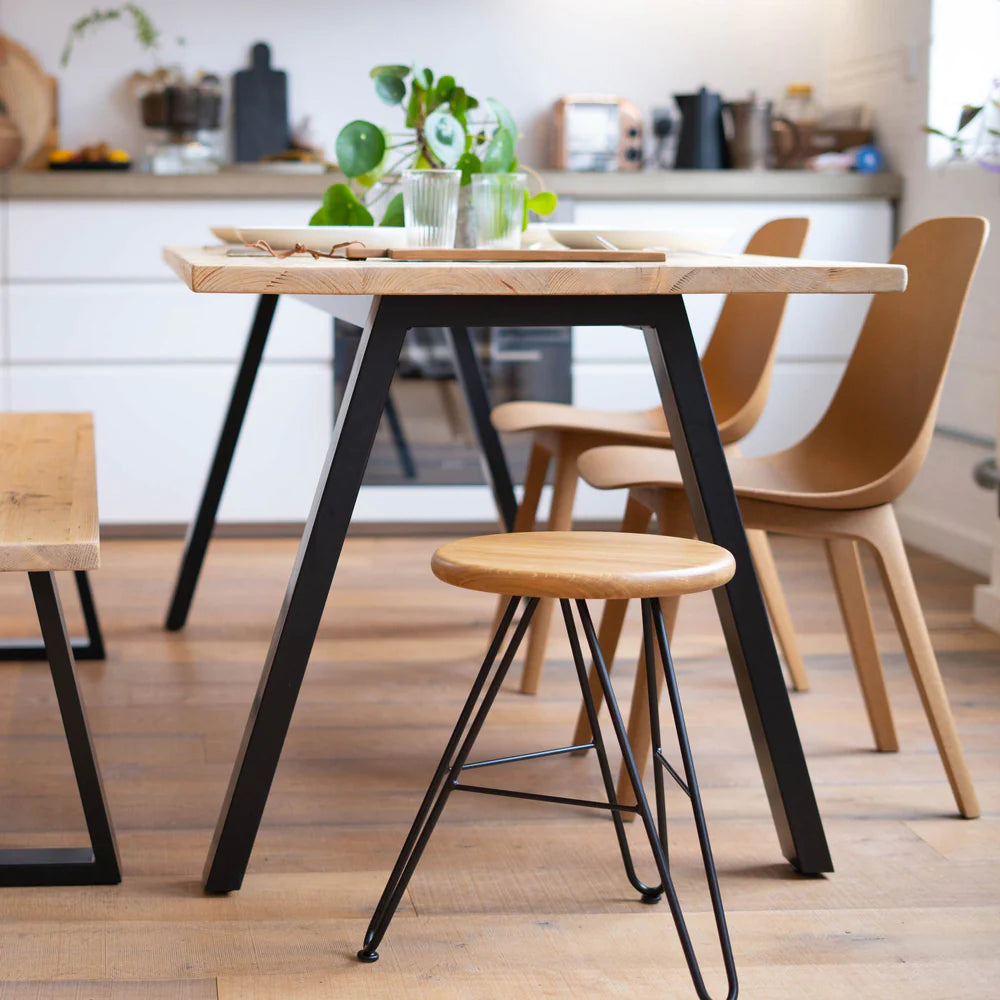The Ultimate Guide to Selecting Resilient Dining Room Table Legs
The Ultimate Guide to Selecting Resilient Dining Room Table Legs
Blog Article
Choosing the Perfect Eating Table: What Styles Work Best for Your Home?
Picking the optimal dining table for your home can be a nuanced process that stabilizes looks and functionality. Whether your room leans towards typical beauty, modern-day minimalism, rustic appeal, or commercial stylish, the selection of styles readily available can deal with varied preferences. Each design supplies distinct advantages and challenges that can either improve or interrupt your dining area's consistency. Understanding exactly how various materials, shapes, and dimensions interact with your existing design is critical. To navigate these options properly and find a table that genuinely enhances your home, consider the complying with facets in information.
Analyzing Your Room
Evaluating the dimensions and layout of your dining area is a vital initial step in picking the perfect table. Begin by measuring the length and width of the room, accounting for doorways, home windows, and various other building attributes that can affect table positioning. This makes certain that your table not just fits yet additionally permits for comfy movement around it.
Consider the number of individuals you typically entertain. A table should accommodate your household's day-to-day demands while supplying enough versatility for occasional guests. Generally of thumb, allocate at the very least 24 inches of table size each to make sure a comfortable dining experience.
It's additionally crucial to keep proper clearance around the table. Ideally, there should go to least 36 inches between the table side and wall surfaces or other furnishings, making it possible for simple access and activity. For areas where chairs with arms or additional storage space systems like buffets are involved, increasing this clearance to 48 inches is advisable.
Lights and environment play significant duties. Guarantee that your dining table lines up with existing lighting components or plan for ample illumination solutions. This detailed spatial assessment warranties that your table not just fits physically however also integrates with your room's general functionality and visual.
Popular Table Styles

Traditional dining tables often include elaborate details, curved legs, and rich timber surfaces, evoking a sense of classic sophistication. They are best for homes with traditional decoration or those looking to include a touch of refinement to their dining location.
Modern dining tables prioritize simplicity and tidy lines, commonly incorporating products like glass and metal. These tables are optimal for contemporary rooms, supplying a sleek and minimalist appearance that complements minimal style viewpoints.
Rustic eating tables, on the various other hand, emphasize all-natural materials and a handmade look - dining room table legs. They frequently feature redeemed timber and a troubled finish, creating a warm and welcoming atmosphere. These tables function well in farmhouse-style homes or those seeking a comfy, organic feeling
Industrial dining tables incorporate resources such as steel and wood, often showcasing a practical aesthetic. This style is fit for lofts or city spaces, including a touch of rugged appeal and resilience to the eating experience.
Each style uses distinctive advantages, making it crucial to select one that straightens with your home's overall style and your individual preferences.
Material Selections
When selecting an eating table, the selection of material plays a vital role in identifying both the table's aesthetics and performance. Timber, steel, glass, and composite materials each offer special advantages and challenges, making it necessary to align the material with your home's design and way of living demands.
Wood is a timeless and flexible choice, readily available in varieties such as oak, walnut, and mahogany. Known for its sturdiness and heat, timber enhances both traditional and contemporary interiors. It requires regular maintenance to prevent over at this website scratches and warping.
Metal tables, frequently crafted from stainless steel, light weight aluminum, or functioned iron, are commended for their modern-day allure and effectiveness. They are specifically matched for commercial or minimal setups however can be susceptible to dents and may feel cold to the touch.
Glass dining tables bring an air of elegance and visibility, perfect for smaller sized rooms as they produce an illusion of more room. While easy to tidy, glass can be at risk to smudges and requires mindful taking care of to stay clear of chips and fractures.
Composite materials, such as MDF and plywood, offer cost-effective and customizable remedies, though they might lack the longevity of all-natural products. Choosing the best material guarantees your dining table is both a functional special info asset and an aesthetic pleasure.
Shape and Dimension Factors To Consider
After determining the appropriate product for your dining table, the following consideration is selecting the appropriate shape and dimension to match your area. Conversely, round tables promote a sense of affection and are outstanding for smaller dining areas, urging discussion by getting rid of corners and making everyone really feel equally included.
As a policy of thumb, allot at least 24 inches of table width per individual to guarantee comfortable dining. Furthermore, consider the table's clearance space: there need to be at least 36 inches between the table edge and the wall surfaces or various other furniture. Extending tables offer flexibility if you often organize larger events, providing added seating when needed without occupying extra space try this out daily.
Matching Your Style
Picking an eating table that balances with your existing decoration is pivotal in producing a cohesive and welcoming space. Begin by assessing your present interior decoration style, whether it be modern, standard, rustic, or eclectic. The table need to complement the general aesthetic, not take on it. A streamlined, minimal table with clean lines is optimal for a modern home, while a vintage, luxuriant table fits a more traditional setup.
If your decoration includes cozy tones and all-natural products, think about a wood table to improve the organic feeling. Alternatively, a glass or metal table may be extra proper in a space controlled by trendy shades and industrial components.
Appearance plays a crucial role. A rough-hewn, redeemed wood table can add character to a rustic area, while a refined marble surface can elevate an elegant dining location. Finally, consider the scale and percentage of the table in regard to the room dimension and existing furniture. A well-matched table not only improves aesthetic charm yet likewise enriches the general eating experience.

Conclusion
Choosing the perfect table demands cautious factor to consider of area, design, products, shape, and size (dining room table legs). Typical tables complement traditional interiors with rich wood finishes, while contemporary tables match modern settings with glass and metal. Rustic layouts introduce heat via natural materials, and commercial styles enhance metropolitan environments with raw elements. Integrating the eating table with existing decor makes certain both functionality and visual appeal, contributing to a natural and cosmetically pleasing eating location.
Report this page